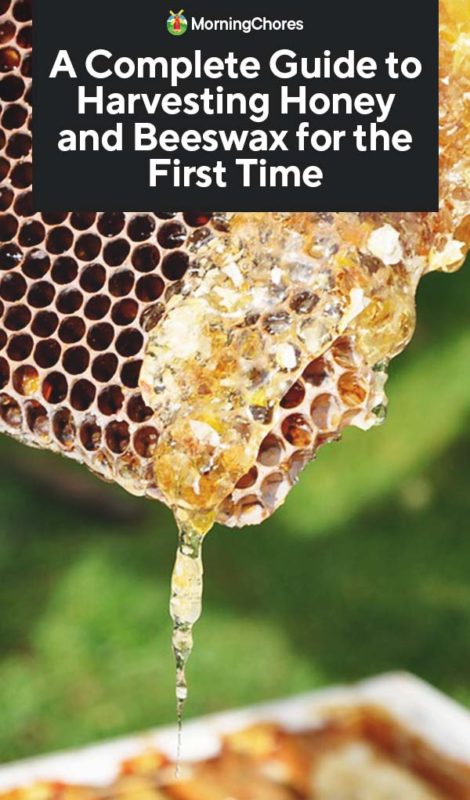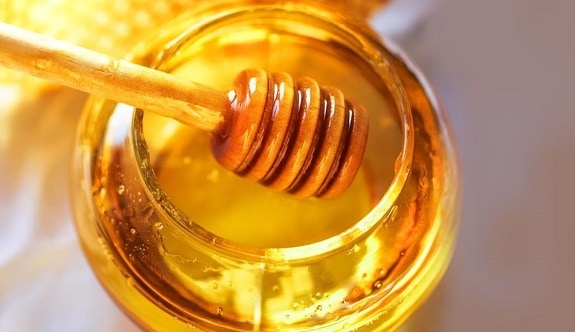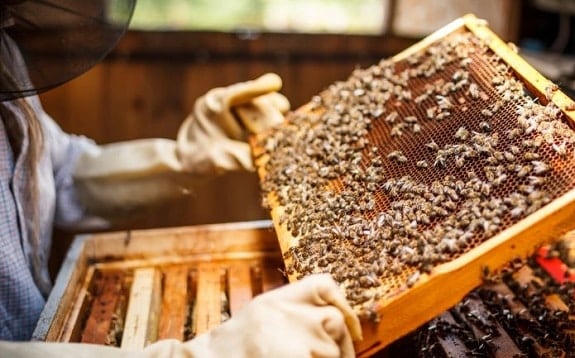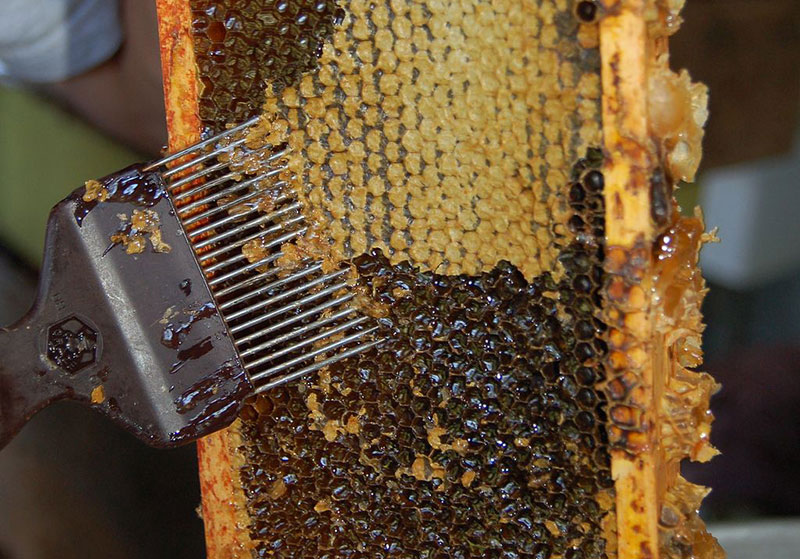
Are you a budding beekeeper or simply interested in the art of honey collection? Look no further! In this article, we will explore the fascinating world of beekeeping and unveil the secrets to achieving the perfect harvest. From understanding the optimal timing for collection to mastering the essential techniques, you’ll soon be on your way to enjoying the golden bounty of honey from your own hives. Get ready to embark on an enchanting journey into the world of beekeeping and discover the sweet rewards that await you.

When to Harvest Honey
Monitoring Honey Ripeness
Monitoring the ripeness of honey is essential in determining the perfect time to harvest. It is crucial to wait until the honey is properly matured to ensure its quality and flavor. You can monitor honey ripeness by observing its color and consistency. When the honey is ripe, it should have a golden or amber color and should be thick and viscous. You can also check the honey’s moisture content using a honey refractometer to ensure it falls within the ideal range of 18-20%.
Time of Year and Weather Conditions
The time of year and weather conditions play a significant role in determining when to harvest honey. Generally, honey is harvested during the late summer or early fall when nectar flow is at its peak. It’s important to consider the local climate and the availability of nectar-producing flowers in your area. Warm, dry weather conditions are preferable as they promote better nectar production and honey ripening. Be mindful of any unexpected weather changes that may affect the honey flow and harvest timing.
Signs of Bees Preparing for Harvest
Bees exhibit certain behaviors when they are preparing for the honey harvest. Keep an eye out for these signs to ensure you harvest at the right time. One clear sign is when the bees start capping the honey cells with wax. Capped honey cells indicate that the honey inside has reached its ideal moisture content and is ready for harvest. Additionally, an increase in bee activity around the honey supers and a change in their buzzing tone can indicate the bees’ readiness to have the honey harvested.
Preparing for Harvest
Checking Hive Health
Before harvesting honey, it is essential to check the health of your hive. A healthy hive with strong and vibrant bees is crucial for optimal honey production. Inspect the hive for signs of disease, pests, or any other issues that may compromise the hive’s health. This includes checking for varroa mites, examining the brood pattern, and ensuring the presence of a healthy queen. Address any problems or concerns before proceeding with the honey harvest to maintain the overall well-being of your bee colony.
Supplementing Bee Food
To ensure the bees have enough food during the honey harvest, it is advisable to supplement their diet. This is particularly important during times of nectar scarcity or if you plan on harvesting a significant amount of honey. Provide the bees with a supplemental feed such as sugar syrup or fondant. This will help prevent them from consuming too much of their honey stores and ensure they have enough resources to sustain themselves during and after the harvest.
Clearing Supers for Harvest
To facilitate the honey harvest process, you will need to clear the supers of bees. There are various methods to achieve this, depending on your preferred technique. One method is to use a bee escape board. This board is placed between the brood and honey supers and allows the bees to move downward but prevents them from returning to the honey supers. Another method is to brush the bees off the frames gently using a bee brush. This method requires careful handling to minimize harm to the bees.
Harvesting Techniques
Using a Bee Escape Board
A bee escape board is a useful tool for clearing the honey supers of bees before harvest. This board is inserted above the honey supers, and the bees are encouraged to leave the supers and move down into the brood chamber. The bee escape board has one-way bee escapes that allow the bees to exit the supers but prevent their re-entry. By leaving the bee escape board in place for at least 24 hours, the majority of bees will vacate the supers, making the harvest process much easier.
Brushing Bees off Frames
Brushing bees off frames is another effective technique for clearing the frames before harvest. Using a soft-bristled bee brush, gently brush the bees from each frame. Be careful not to harm or stress the bees while doing this. It is advisable to perform this technique over a white sheet or a new box to collect any bees that fall during the process. This way, you can ensure that no bees are inadvertently injured or crushed during the harvesting process.
Using a Honey Extractor
Once the frames are cleared of bees, it’s time to extract the honey using a honey extractor. A honey extractor is a mechanical device that spins the frames to remove the honey. Place the cleared frames inside the extractor’s basket, ensuring they are securely fastened. Start the extractor’s spinning motion slowly, gradually increasing the speed. As the frames spin, the honey is forced out of the cells by centrifugal force, collecting at the bottom of the extractor. This method allows for efficient and gentle extraction of honey without damaging the honeycomb.
Extracting Honeycomb
Removing Frames from Supers
To extract honeycomb successfully, begin by removing the frames from the supers. Carefully lift each frame out, ensuring not to damage the honeycomb or disturb the bees. Using a gentle twisting motion can help to separate the frames from the super without causing unnecessary disruption. Place the removed frames on a clean surface to prepare them for uncapping.
Uncapping the Honeycomb
Before honey extraction, the honeycomb cells must be uncapped to release the honey. Uncapping can be done using various methods, such as an uncapping knife or an electric uncapping tool. With an uncapping knife, gently slice off the wax cappings from both sides of the honeycomb cells. Ensure that the knife is heated and clean for smooth and effective uncapping. Alternatively, an electric uncapping tool can be used to melt and remove the wax cappings. Whichever method you choose, take care to remove only the wax and not damage the honeycomb structure.
Spinning Honey Frames in the Extractor
Once the honeycomb cells are uncapped, it’s time to spin the frames in the extractor to extract the honey. Load the uncapped frames into the honey extractor’s basket, ensuring they are evenly distributed and balanced. Start the spinning motion slowly and gradually increase the speed. As the honey frames spin, the centrifugal force will extract the honey from the comb, allowing it to collect at the bottom of the extractor. It’s recommended to spin each frame twice, reversing their position after one spin to extract as much honey as possible.

Filtering and Bottling Honey
Filtering the Extracted Honey
After extraction, it’s important to filter the extracted honey to remove any impurities or hive debris. You can use a fine mesh strainer or a honey filter to achieve this. Place the filter or strainer over a clean container and slowly pour the extracted honey through it. This process will remove any wax particles, bee parts, or other solids, resulting in a clear and smooth honey. Filtering the honey ensures its purity and enhances its overall quality.
Allowing the Honey to Settle
After filtering, it’s beneficial to allow the honey to settle for a period of time. This allows any air bubbles or foam to rise to the surface, making it easier to remove them. Letting the honey rest in a settling tank or container for a day or two will help to achieve a more stable and visually appealing end product. During this settling period, any remaining impurities or sediments will also settle at the bottom, further improving the honey’s clarity.
Bottling and Labeling the Honey
Once the honey has settled, it’s ready to be bottled. Choose suitable containers for your honey, such as glass jars or food-grade plastic containers. Ensure that the containers are clean and dry before filling them with the honey. Use a funnel or honey dispenser to transfer the honey without spills or mess. Label each container with the necessary information, such as the harvest date, honey variety, and your contact information. Properly labeling your honey will help you keep track of its origin and maintain a professional presentation.
Storing and Preserving Honey
Choosing Suitable Containers
When storing honey, it is important to choose containers that are suitable for preserving its quality. Avoid using containers made of material that may interact with the honey or alter its taste. Glass jars with tight-fitting lids or food-grade plastic containers with airtight seals are ideal choices. Ensure that the containers are clean and completely dry before storing honey to prevent any potential moisture absorption or spoilage.
Preserving Honey’s Quality
To preserve the quality and flavor of honey, it is essential to store it properly. Honey should be kept in a cool, dark, and dry place. Exposure to direct sunlight and high temperatures can cause the honey to degrade and lose its beneficial properties. Additionally, honey should be protected from excessive moisture, as it can lead to fermentation or spoilage. By storing honey in appropriate conditions, you can maintain its freshness and extend its shelf life.
Storing Honey Properly
Proper storage of honey involves sealing the containers tightly to prevent air and moisture from entering. Make sure the lids or seals are secure and airtight to maintain the honey’s quality. Store the containers in a pantry or cupboard away from heat sources, such as stoves or radiators. It’s also important to keep the honey away from strong-smelling substances, as honey can easily absorb odors. Adhere to these storage guidelines to ensure your honey remains delicious and enjoyable for an extended period.

Factors Affecting Honey Harvest
Local Flora and Nectar Sources
The local flora and available nectar sources greatly influence the honey harvest. Be aware of the flowering plants in your area and their blooming periods. Different plants produce varying amounts and types of nectar, which can affect the flavor and yield of honey. Consider the diversity of nectar-producing plants in your region and their nectar flow patterns to determine the optimal time for honey harvest. By aligning your harvest with abundant nectar sources, you can maximize the quantity and quality of your honey.
Colony Strength and Population
The strength and population of the bee colony directly impact honey production. A strong and healthy colony with a sufficient number of bees can gather nectar and produce honey more efficiently. Ensure that your colony has a viable queen and monitor its population regularly. Maintain a balanced ratio of adult bees to brood to support efficient foraging and honey production. Regular hive inspections and management practices are crucial in fostering a thriving colony and maximizing your honey harvest.
Hive Management Practices
Effective hive management practices play a vital role in honey production. Regular inspections help identify potential issues and allow for timely intervention. Monitor the honey supers regularly to assess their filling levels and determine the appropriate time for harvest. Properly maintaining the hive’s equipment, including frames and supers, ensures optimal conditions for honey production and extraction. Implementing good hive management practices will contribute to healthier bees, increased honey yield, and overall success in beekeeping.
Safety Precautions
Using Protective Clothing
When engaging in honey harvest activities, it is essential to prioritize your safety and protect yourself from potential stings. Wear appropriate protective clothing, including a beekeeping suit or jacket, gloves, and a veil or hat with a veil attachment. This attire helps shield your body from bee stings while allowing you to work comfortably and confidently. Proper protective clothing provides an added layer of safety, reducing the risk of allergic reactions or injuries during the honey harvesting process.
Handling Bees in a Calm Manner
Maintaining a calm and composed demeanor while handling bees is a key aspect of safety during the honey harvest. Bees are highly sensitive to human emotions and can react negatively to sudden movements or loud noises. Approach the hive and handle the bees in a gentle and slow manner to avoid agitating them. Smooth and deliberate actions can help keep the bees calm, minimizing the likelihood of defensive behavior or stinging incidents.
Managing Allergies and Reactions
If you have known allergies to bee stings or experience adverse reactions to bee venom, take appropriate precautions during the honey harvest. Consult with a medical professional if necessary to discuss allergy management options. Ensure you have easy access to necessary medications, such as antihistamines or epinephrine auto-injectors, in case of an allergic reaction. Inform others about your allergies and have a clear plan of action in case of an emergency. By being proactive and prepared, you can engage in honey harvest activities with confidence and minimize potential risks.

Maximizing Honey Yield
Providing Ample Forage
To maximize honey yield, ensure that your bees have access to abundant forage sources. Plant a variety of nectar-producing plants in your vicinity to provide a diverse and continuous supply of food for your bees. Consider native plants, shrubs, and trees that are well-suited for your region and offer nectar-rich flowers. By providing ample forage, you can stimulate increased honey production and support the overall health and vitality of your bee colony.
Maintaining a Healthy Bee Colony
The overall health and well-being of your bee colony directly impact honey yield. Follow proper hive management practices to maintain a healthy and thriving colony. Monitor the bees for signs of disease, parasites, or stress factors. Implement appropriate pest control measures and treatment methods as necessary. Ensure there is a balanced nutrition plan in place to support the bees’ immune systems and promote their overall health. A healthy colony is more productive and capable of producing higher quantities of honey.
Minimizing Stress Factors
Minimizing stress factors within the honey production environment is crucial for maximizing honey yield. Avoid unnecessary disturbances to the hive and limit hive inspections to essential times. Minimize loud noises and sudden movements around the hive, as they can stress the bees and impact their productivity. Maintain hive temperature and ventilation, providing a stable and comfortable environment for the bees. By reducing stress factors, you can create optimal conditions for honey production and achieve a higher honey yield.
Using a Honey Refractometer
Measuring Honey Moisture Content
A honey refractometer is a valuable tool for beekeepers to measure the moisture content in honey. Honey with excessive moisture is more prone to fermentation and spoilage. The ideal moisture content for harvested honey is between 18-20%. By using a honey refractometer, you can accurately measure the moisture levels and determine if the honey is ripe for harvest. Testing the honey at different stages of the harvesting process ensures that you collect honey at its optimal ripeness, resulting in a high-quality end product.
Determining Honey Ripeness
In addition to measuring moisture content, a honey refractometer can assist in determining the ripeness of honey. By determining the honey’s specific gravity or density, the refractometer provides an indication of the honey’s maturity and sugar concentrations. Honey that is ripe and ready for harvest will have a specific gravity reading generally above 1.400. With the help of a honey refractometer, you can precisely ascertain the ideal time to harvest the honey, ensuring it has reached its peak flavor and quality.
In conclusion, timing and proper techniques are essential for a perfect honey harvest. Through monitoring, preparation, and careful execution, you can ensure the optimal ripeness of honey and maximize your yield. By prioritizing hive health, utilizing effective harvest techniques, and adhering to proper honey processing practices, you can enjoy the golden rewards of your labor. Remember to prioritize safety, maintain a healthy bee colony, and be mindful of the factors that influence honey production. With patience and knowledge, you can achieve a bountiful and delectable harvest, savoring the fruits of your beekeeping endeavors.
